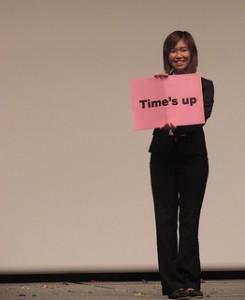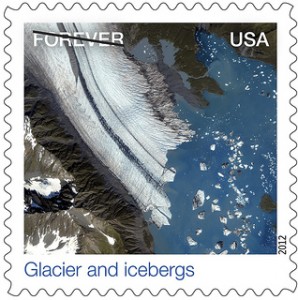In a recent webinar I presented about How Creative Thank Yous and an Attitude of Gratitude Can Supercharge Your Fundraising, it became apparent there’s one question many of you struggle with:
Gosh dang it! How on earth do you develop a system that assures thank you’s really get out in 48 hours?
HERE’S THE BIGGEST SECRET:
1. You’ve got to get everyone in your organization to buy in to the 48-hour rule. Donor etiquette is not like wedding etiquette. You don’t have a year to send the thank you note. You have 48 hours. No kidding. This is perhaps the most important thing you can do to sustain donor relationships. But if anyone doesn’t take this seriously, it won’t happen. And if you can’t make this happen, you’re going to leave money on the table. You’re going to lose donors. Period.
So… how do you get everyone on board?
More Secrets:
2. Begin with the research*. There’s a reason it’s an industry best practice. Show the research to your ‘Doubting Thomas’s’ so they can no longer argue with you. Donors do care about this. People want to know you actually got the gift. And if you’re really slow, it makes you appear inefficient. They’ll wonder — is this how you run the rest of your business?
For more proof to those who may get in the way, share this true story:
I remember a time when a donor asked that contributions in honor of his marriage be made to the organization for which I worked. He and his bride also named two other charities. Guess what? My organization sent a continual stream of prompt, personal acknowledgements. The other charities took weeks to send notifications. The donor let me know personally how much our acknowledgements meant, and we began a relationship. Ultimately, he joined the board, chaired the development committee and became a major supporter. All because of the thank you process!
3. Develop written Acknowledgment Policies and Procedures to assure you have the cross-departmental systems (often facilities, finance and development) in place to get the job done in a timely manner (here are two examples of policies from Association of Advancement Services Professionals and AFP: Developing Fundraising Policies and Procedures).
TIP: Think about the journey a donor’s gift takes from the minute it leaves their hands to getting deposited to your account. How quickly do you welcome the gift from its travels? Is everyone who should be involved in expediting the journey aware of their role to avoid delays, and do they own it? Do you have a “The show must go on” or a “Que Será Será” culture? Once I simply assigned staff to pick up and deliver mail on a daily basis. It speeded up thank you letters by two whole days. Where are your hold-ups?
- Do you wait for the mail to arrive ‘whenever’, or do you assign someone to pick it up at the post office every morning? “The mail was late today” is not a good excuse.
- Where does the mail go first? Does someone in the mail room open it and remove all the checks (so they don’t end up sitting on the desk of a staffer who may be out of the office that day… or week)? “I was out with the flu for a week so didn’t know you’d given until just now” is not a good excuse.
- Where do checks go first? Do they go to the finance or development department? If finance, do they make it a rule to account for/deposit all gifts on a daily basis; then provide development with same day copies? If someone is absent in the finance department, do they have a back-up staffer to handle the gifts? “We were understaffed last week” is not a good excuse.
- Where do credit card payments go first? When a donor enters a card number on a remit piece, does it get processed that day? Or is your finance department holding all credit cards to process in weekly batches; then not informing development until the processing has occurred? “Since you gave by credit card you may not have received your thank you yet” is not a good excuse.
- Once the gift arrives in the development department, what steps are taken to assure the thank you gets to the donor promptly and personally? Is gift acknowledgment the sole job of a staffer so that they make it a priority? If assigned to someone with other responsibilities, do you have a policy of “acknowledge gifts first”? Once a computer-generated letter is produced, what happens next? Does the person who proofs the letters reserve specific hours every day for this assignment? If the letters then go to the executive director for personalization, does s/he reserve the time? If volunteers add personal notes, does this happen on a daily basis? “The E.D. was on vacation for three weeks, so that’s why you’ve probably not received your thank you” is not a good excuse.
- Once the thank you is signed what happens next? Does it get inserted into an envelope that’s been pre-stuffed with any inserts you regularly send to your donors? Or do you hold the letter until inserts can be added later on? “We ran out of our inserts and had to print some” is not a good excuse.
- Once the thank you is sealed what happens next? Do you wait for the mail to be picked up the next morning, or do you assign someone to take it to the post office (or a mail box where it will be picked up that night) every day? “The dog ate the person who usually goes to the mailbox” is not a good excuse.
You can see that not having clarity on the answers to these questions can easily tack on several days to a week to your thank you letter’s journey.
Don’t let your higher level donor letters take longer to get mailed because they sit on the director’s desk for a week waiting for a personal note. Figure out a system to avoid this and make it part of your policies and procedures.
- Don’t let your online donors suffer just because they chose to give via your website. Make sure they get a prompt thank you that you’ve customized, and not just a canned emailed receipt. These folks should also receive a mailed thank you letter, with all your inserts and personal notes, but you can take a little longer with this since they already know you’ve received and appreciated the gift.
- Direct mail studies say within 48 hours, but I know sometimes that’s hard. I empathize. If you get the letter out within a week, that’s okay. Skies will not fall. But… honestly, strive for 48 hours. Sometimes that will turn into a week for one reason or another. If you allow yourself a week, it will stretch into two. That’s too long.
- If you absolutely have so many online donors that you can’t afford to send mailed thank you letters to all of them, then at least make sure you send them to the subsets of your supporters you’ve identified as most likely to be sustaining donors. This includes major donors and recurring donors.
* RESEARCH: In Donor-Centered Fundraising by Penelope Burk she says there are 3 simple steps to raising more money. She suggests that a simple acknowledgement can satisfy the first two needs immediately. The third can be addressed over time through a combination of communications with the donors. “A donor needs to know
- that the gift was received…and you were pleased to get it.
- that the gift was ‘set to work’ as intended.
- that the project or program to which the gift was directed had the desired effect.”
Remember that your prompt, personal thank you builds a bridge to future support and deeper engagement. Do it well, and you are on your way to future fundraising success. How have you overcome obstacles to getting your thank you out in 48 hours?
Ready to Rev Up Your Gratitude and Keep More Donors?

Enroll and receive discounts on all Clairification products – plus weekly tips!
If you want to develop a strategic donor acknowledgment program, check out How to Cultivate An Attitude of Gratitude and Keep Your Donors. For more on this topic, get, 48 Hours: Your Donor Acknowledgement Solution Kit. All Clairification products have a 30-day no-questions-asked 100% money-back guarantee.










Thanks, Claire.
I shared your article with our user’s group.
Joe Scarano
Lovely Joe. Happy to be helpful. 🙂
Claire, thank you for this terrific post. Donor retention rates are too low. One major reason is that organizations often do a horrible job thanking donors. And, as you’ve identified, one major problem with the acknowledgement process has to do with turn-around time.
I agree with everything you’ve stated. I just want to underscore one point. You wrote, “Don’t let your higher level donor letters take longer to get mailed because they sit on the director’s desk for a week waiting for a personal note. Figure out a system to avoid this and make it part of your policies and procedures.”
I see this all the time. Development staff set aside special gifts to receive special thank-yous. Often, the result is that the special donor doesn’t receive a thank you letter for weeks! This is why I always encourage folks to thank all donors in a standard way. Then, IN ADDITION, special donors can be sent another thank you letter from a more senior staff person. With this procedure, one can be assured that all donors are thanked quickly AND that all special donors will receive a special thank-you as well.
Amen Michael. And thank you for adding this emphasis. I find this also happens with special donor solicitations. They are pulled out of the regular donor mailing and “saved” for special treatment; whoever is assigned to call them procrastinates until it gets so late they’re embarrassed to make the call. We need to put systems in place to assure our TLC folks get the tender loving care they deserve.
Donor acknowledgement should be the number one priority in the development department. Make it the first thing you do in the morning – before social media posts, before answering emails, before any kind of office meeting, ..do it first and it won’t get put on the back burner.
Good advice. Thanks Leslie. 🙂
Thanks for this great post. I’m familiar with Burk’s work and I know she’s measured the results of donors receiving a call from a board member within 48 hours of gift receipt — giving and retention increased significantly one year later vs control group who didn’t receive a call. I’m wondering if you know of similar research – by Burk or anyone else – regarding acknowledgement letters being sent within 48 hours. If there are concrete numbers, I’ve never seen them. Thanks so much!
Hi Tina!
Yes, you’re right that Burk’s research focused on thank you calls by board members w/in 48 hours. I’m not sure if there has been research on mailed letters specifically. I do know of Adrian Sargeant’s research showing thanking donors for their gifts, informing donors how their money is spent, responding quickly when donors contact the organization, and being polite in communications are critically important. His research found that the overall perception of service quality provided by the fundraising department dramatically affects donor retention. Of course, I know you know that too because I read your excellent articles on Funding Change!
Hmmn… maybe we’ve all just jumped on this bandwagon because it reeks of common sense based on the limited research that has been done? I guess it may fall into the category of “if you repeat something often enough it becomes true.” Now I’m going to keep my eyes out for research. Maybe there’s some in the for profit world?
You’re good to call us out on this. I’m certainly not going to stop aiming for the 48-hour turn-around. But I will be on the lookout for research that empirically supports this.
Oh don’t get my wrong. I impress the 48 hour rule on my clients all the time. I’d just love some hard data to back it up. Thought you might have the goods. 🙂
Thanks so much for your reply!
Claire,
what is your thought about monthly givers that give by credit card withdrawal and EFT on the 1st and the 15th of each month, should those get a thank you within 48 hours as well or just at the end of the month?
Great question. For the FIRST give they need the prompt thank you. After that, I don’t like sending monthly donors an acknowledgement every single time a gift is processed. It’s too much, and sometimes it ticks them off (especially if you’re sending paper acknowledgements and they perceive you as killing too many trees). Of course, the best way to know what your individual monthly donors want is to ask them. If you can, send them a survey after the first gift asking if they prefer: (1) individual ack. of ea. gift; (2) quarterly summary; (3) year-end summary. Then make sure you follow through!
I do like doing something special once or twice/year for monthly donors. Even though you’re not thanking for every gift, you do want to build in some strategies to get to know them and begin to build a relationship with them. The simplest thing to do is to call these folks and thank them at least once during the course of the year. And maybe send them a greeting card at another point during the year. Another thing to consider is a ‘get-to-know’ you party for these folks. It can be very casual, and perhaps include a tour or speaker. Or maybe host a volunteer ‘work day’ for them. It lets them hang out with other folks like them, and begins to create a sense of being a part of your family/community. Or, if your donors are spread out, consider a Skype video chat or Google hang-out or FB chat with them. It’s great if the E.D. can be on these chats.
The point is to make these folks feel special, but also to help them see that by giving to you monthly they are making it easy for you to plan ahead, save on expenses and overall be much more efficient and effective.
Thank you so much this will be a great help!
Great article, thank you so much! I’m interested in the same question as Tina Cincotti – is there empirical research that quantifies the results of 48 hour turn around time. I’ve been scouring the internet and still can’t find any, so if you’ve unearthed any since the original post, can you point me toward it?
The principle research I’ve seen is from Penelope Burk and Cygnus Research. In one test, board members called donors within 48 hours of their gift. As a result of the call, 39% more of these donors renewed than donors who were not called. Also, 42% of the donors who received calls gave larger gifts than those who were not called. I always recommend that charities test this and track the results for themselves. Thanks for asking!